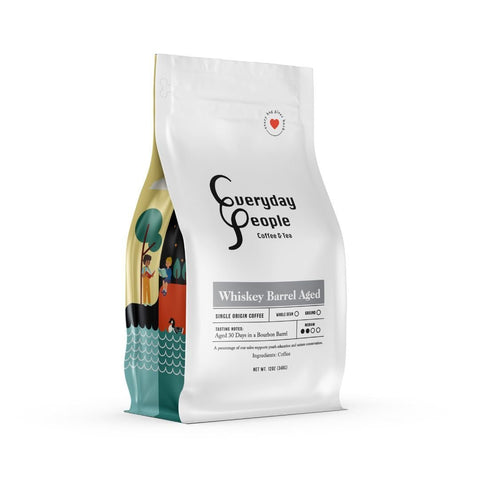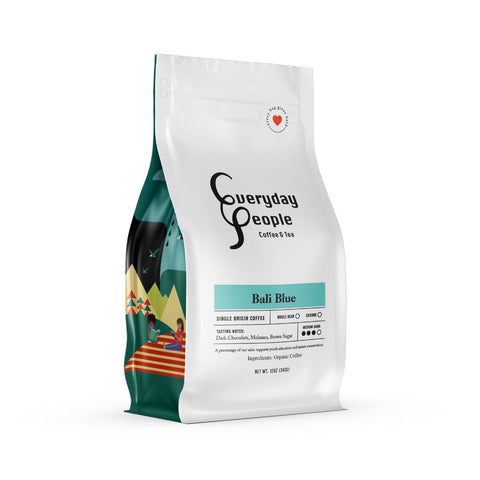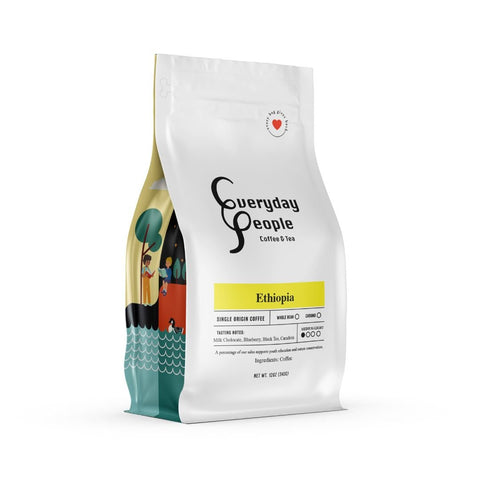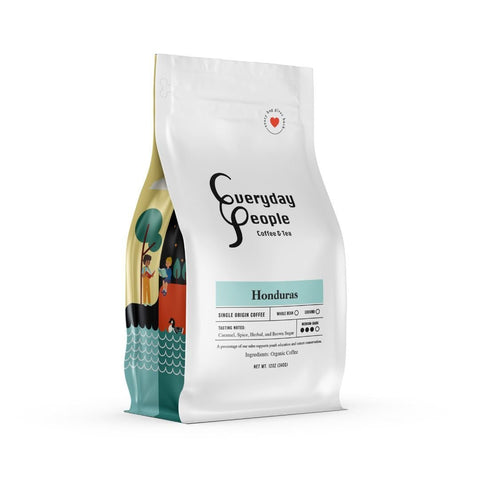When summer heat makes hot coffee less appealing, iced coffee becomes the perfect refreshing alternative. But not all coffee beans are created equal when it comes to cold brewing. The right coffee can make the difference between a smooth, flavorful iced drink and a bitter, disappointing cup.
What Makes Coffee Great for Iced Brewing?
The best coffee for iced coffee needs specific characteristics that differ from hot brewing methods. Cold brewing extracts flavors more slowly and selectively, requiring beans that can deliver rich taste without overwhelming acidity or bitterness.
Key Characteristics of Ideal Iced Coffee Beans
Lower Acidity Levels: Cold brewing naturally reduces acidity, but starting with low-acid beans prevents any sharp, unpleasant notes from developing over the extended brewing time.
Rich Body and Mouthfeel: Since ice dilutes the final drink, you need coffee with substantial body that maintains its character even when watered down.
Balanced Flavor Profile: The best iced coffee beans offer complexity without harsh edges, creating a smooth drinking experience that's equally enjoyable black or with milk.
Best Roast Levels for Iced Coffee
Medium Roast: The Sweet Spot
Medium roast coffee consistently delivers the best results for iced coffee. These beans offer the perfect balance of origin flavors and roasted characteristics, providing enough body for cold brewing while maintaining the bright, nuanced notes that make iced coffee interesting.
Medium roast beans retain more of their natural oils and sugars, which translate into a fuller, more satisfying iced coffee. The roasting process develops enough caramelization to add depth without creating the bitter compounds that can dominate lighter roasts in cold brewing.
Dark Roast: Bold and Robust
Dark roast coffee works exceptionally well for those who prefer stronger, more intense iced coffee. The extended roasting process creates deep, chocolatey flavors and reduces acidity significantly, resulting in a smooth, rich cold brew.
However, be careful not to choose beans that are too dark, as over-roasted coffee can become overly bitter when cold-brewed for extended periods.
Light Roast Considerations
While light roast coffee preserves more origin characteristics and offers bright, complex flavors, it can be challenging to work with for iced coffee. The higher acidity and more delicate flavor compounds don't always translate well to cold brewing methods.
Top Coffee Origins and Varieties for Iced Coffee
Guatemalan Coffee: Rich and Complex
Guatemalan coffee, especially from the Antigua region, brings remarkable depth to iced coffee. These beans typically offer full body, low to moderate acidity, and complex flavor notes including chocolate, spice, and subtle fruit undertones that develop beautifully during cold extraction. Read about our Guatemala farm partner relationships.
Honduran Coffee: Smooth and Balanced
Honduran coffee has gained recognition for producing exceptional beans perfect for iced coffee applications. With their naturally sweet profile, medium body, and notes of caramel and chocolate, Honduran beans create smooth, well-balanced cold brew that's neither too acidic nor overpowering. Discover our Honduras farm partnerships.
Ethiopian Coffee: Bright and Floral
Ethiopian coffee offers unique characteristics for adventurous iced coffee drinkers. While traditionally known for bright acidity, certain Ethiopian varieties, particularly natural-processed beans, can create complex, wine-like iced coffee with fruity undertones and floral aromatics. Learn about our Ethiopian coffee farm partners.
Indonesian Coffee: Earthy and Full-Bodied
Indonesian coffee, particularly from Sumatra and Java, provides exceptional body and low acidity that translates beautifully to iced coffee. These beans offer earthy, herbal notes with hints of spice and tobacco that create a distinctive, full-flavored cold brew experience. Explore our Indonesian farm partnerships.
Single-Origin vs. Blends for Iced Coffee
The Case for Coffee Blends
Coffee blends often outperform single-origin options for iced coffee because they're specifically designed to create balanced, consistent flavor profiles. Master roasters combine beans with complementary characteristics, resulting in a more robust final product that maintains its character when served over ice.
Blends typically offer better value and more predictable results, making them ideal for daily iced coffee consumption. The combination of different origins can create complexity that single-origin coffees sometimes lack in cold brewing applications.
Single-Origin Advantages
Single-origin coffees allow you to explore specific regional characteristics and terroir in your iced coffee. When you find a single-origin that works well for cold brewing, it can provide a unique, distinctive flavor experience that showcases the particular growing region's qualities.
The key is choosing single-origin coffees from regions known for low acidity and full body, such as Indonesia, Peru, or parts of Guatemala.
Grind Size and Preparation Tips
Coarse Grind for Cold Brew
When preparing cold brew coffee at home, always use a coarse grind similar to French press consistency. The larger particle size prevents over-extraction during the long steeping process and reduces the risk of bitter compounds overwhelming your iced coffee.
Medium-Fine Grind for Japanese Iced Coffee
If you prefer the Japanese iced coffee method (brewing hot directly over ice), use a medium-fine grind similar to pour-over consistency. This method requires faster extraction, so the finer grind ensures proper flavor development in the shortened brew time.
Best Coffee Products for Iced Coffee from Everyday People Coffee & Tea
Specialty Blends
Cold Brew Medium Roast is our signature blend designed specifically for cold brewing, featuring beans selected for their low acidity and rich body that creates smooth, flavorful iced coffee every time.
Breakfast Boost House Blend Medium Roast offers bold, robust flavors that work exceptionally well for iced coffee, with the deep, chocolatey notes that medium rost brings to cold brewing applications.
Single-Origin Selections
Bali Blue Single Origin Organic Medium-Dark Roast offers the full-bodied, earthy characteristics that work beautifully for iced coffee, with Indonesian terroir that provides rich, complex flavors perfect for cold brewing.
Peru Whole Bean Coffee delivers the balanced acidity and chocolate notes that create exceptional iced coffee, showcasing the high-altitude growing conditions that make Peruvian coffee ideal for cold brewing applications.
Expert Tips for Perfect Iced Coffee
Water Quality Matters
Use filtered water for your iced coffee preparation. Since cold brewing doesn't benefit from the purifying effects of high heat, water quality becomes even more critical for achieving clean, pure flavors in your final drink.
Proper Coffee-to-Water Ratio
For cold brew concentrate, use a 1:4 ratio of coffee to water. For ready-to-drink iced coffee, aim for 1:8 ratio. These concentrations ensure your iced coffee maintains flavor integrity even after dilution from melting ice.
Temperature Control
Store your cold brew concentrate in the refrigerator and consume within two weeks for optimal flavor. The cold temperature preserves the delicate flavor compounds that make great iced coffee special.
Common Mistakes to Avoid
Over-Extraction Issues
Avoid steeping cold brew for more than 24 hours, as extended extraction times can introduce bitter compounds that overwhelm the smooth characteristics you're seeking in great iced coffee.
Using Pre-Ground Coffee
Always grind your coffee beans just before brewing. Pre-ground coffee loses essential oils and aromatics quickly, resulting in flat, lifeless iced coffee that lacks the vibrancy of freshly ground beans.
Ignoring Bean Freshness
Use coffee beans roasted within 2-4 weeks of your brewing date. Stale beans produce lifeless iced coffee that lacks the complex flavors that make cold brewing worthwhile.
Seasonal Considerations and Storage
Summer Storage Tips
During hot weather, store your coffee beans in airtight containers away from heat and light. Consider buying smaller quantities more frequently to maintain peak freshness throughout the iced coffee season.
Bulk Buying for Cold Brew
If you consume large quantities of iced coffee, consider buying coffee in bulk and storing it properly. Vacuum-sealed containers can help maintain freshness for longer periods, making bulk purchasing more economical.
Conclusion
The best coffee for iced coffee combines low acidity, full body, and balanced flavor characteristics that shine in cold brewing applications. Medium roast blends from regions like Brazil, Colombia, and Guatemala consistently deliver excellent results, while proper grind size and brewing technique ensure optimal extraction.
Whether you prefer the concentrated richness of traditional cold brew or the bright clarity of Japanese iced coffee, choosing the right beans forms the foundation of exceptional iced coffee. Experiment with different origins and roast levels to discover your perfect cold coffee combination.
For detailed brewing instructions and additional tips, check out our comprehensive guide on how to make cold brew coffee at home, which covers everything you need to know about creating café-quality iced coffee in your own kitchen.





